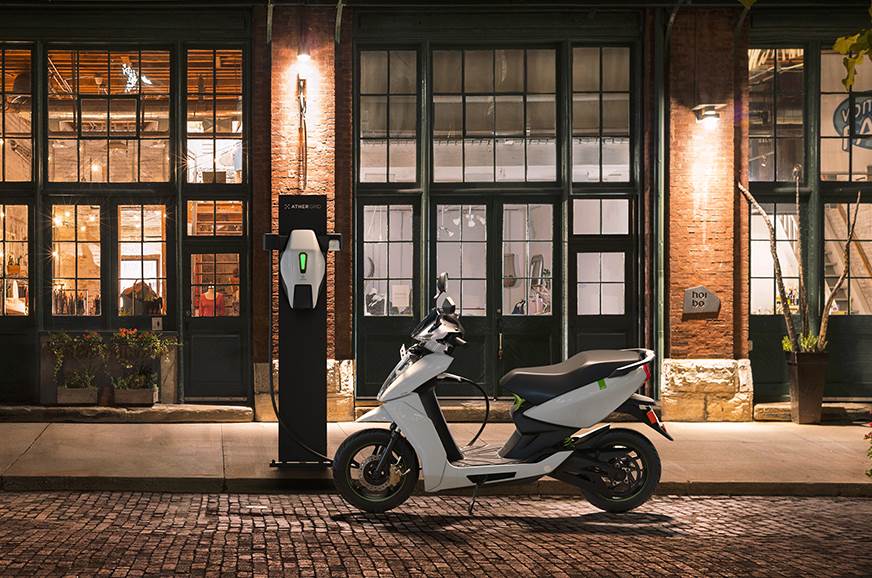
Last week Ola Electric — the electric vehicle arm of ride-hailing giant Ola — raised $100 million in debt from the Bank of Baroda. The money will be used towards closing the first phase of development of its 500-acre factory, which is expected to manufacture 10 million electric two-wheelers a year at full capacity and 15% of the world’s e-scooters by 2022.
Other two-wheeler manufacturers have made important announcements regarding their move into the electric segment. Harley-Davidson earlier this month introduced the first e-motorcycle under its new LiveWire brand. The company is entering the EV arena in the face of competition from several e-motorcycle startups that are attempting to convert gas riders to electric. One of the leaders is California-based startup Zero Motorcycles, which has 200 dealers worldwide. Meanwhile, Lime added a new member to its electric vehicle family in January: e-mopeds. Currently being piloted in Paris and Washington DC, these mopeds are manufactured by NIU, a Chinese company that also supplies mopeds to New York City-based mobility company Revel.
Before we proceed with our analysis, a note on terminology. Some people refer to e-mopeds as e-scooters or vice versa. For others, the term e-moped is used interchangeably with e-motorcycle. For clarity, at Aster Fab, we define e-motorcycles as electric vehicles with an engine size greater than 150cc, e-mopeds with an engine size smaller than 150cc. E-scooters have a floorboard that one can stand on and do not exceed a speed of 15mph.
As the electrification of the automotive industry advances, the electrification of two-wheelers is slowly following the same path, but with less enthusiasm. After the proliferation of e-scooters, the first e-mopeds and e-motorcycles are beginning to hit the market. While BMW has led the electrification efforts in the motorcycle market so far, the momentum for e-motorcycles is gradually building among major manufacturers. Relatively silent on the subject in recent years, Yamaha last month announced its commitment to achieving full lifecycle carbon neutrality for its products by 2050. The company sees itself selling 90% of electric motorbikes by 2050. Honda has also begun filing its first patents. E-motorcycles have less growth potential than e-mopeds, but this electrification revolution is driven by a combination of forces:
- Climate regulations and incentives — two-wheel EVs (E2Ws) and three-wheel EVs (E3Ws) are driven by government regulations and incentives to reduce carbon emissions. In China, internal combustion engine (ICE) engines were banned in 2011. More recently, e-motorcycles and e-mopeds will be exempt from paid parking as of January 2022 in Paris.
- Falling battery prices and lower total costs of ownership — over the next few years, the price of batteries is expected to drop from $200-$280 per kilowatt-hour to $90-$130. This is expected to decrease the cost of ownership and potentially propel demand.
- The emergence of innovative go-to-market models — battery-as-a-service is an example of an innovative model. By decoupling the battery from the sale of the vehicle, as well as greatly improving convenience through express refueling, this model reduces up-front acquisition costs.
- The desire for high-end connectivity — for some consumers, electric two-wheelers are more appealing than standard ICE vehicles because of their higher connectivity.
Despite government incentives, electric two-wheelers are facing the same barriers to adoption as the automotive market. Primary concerns are battery life, limited charging infrastructure and lack of models. For e-motorcycles, additional impediments include the range requirements of consumers (250 miles or more), lack of consumer acceptance (no sound, vibration or engine heat) and ultimately the lack of participation of major manufacturers. Thus, battery swapping will play a key role in accelerating electric two-wheeler adoption. Honda, Yamaha, KTM and Piaggio pushed further into this space in March by announcing their intention to create a swappable battery standard. Indeed, battery swap business models reduce or eliminate market barriers around extended charging times, range anxiety, high upfront costs and battery reliability because riders easily can carry and switch out batteries on the go. Quintessentially a two-wheeler country, India is an exception leading the way with its government incentives and its entrepreneurship (driven by Hero Electric, Ather Energy, Ampere, Okinawa and many more). Just like in China, Vietnam, Indonesia, Thailand, the Philippines, the high urban density rates and high percentages of households that own two-wheelers make these countries best suited for electric two-wheelers. In fact, more than 2 million electric rickshaws are currently running on Indian roads.
Globally the landscape is highly fragmented with many players competing intensely for market share. New entrants even dominate the market in some regions, preventing traditional OEMs from having the same market share as with ICE vehicles. At the same time, other players are tapping into the emerging opportunities associated with electric two-wheelers. Energy companies and utilities, such as Tata Power in India, are acquiring EV-charging infrastructure and capturing upstream value by expanding their offer to battery management systems. While Tier-1 suppliers are moving into new product segments such as electric power trains and retrofit kits. Thus electrification, along with vehicle automation and many other disruptions, is reshaping the traditional value pool.
In conclusion, it is undeniable that the two-wheeler market is gaining momentum worldwide (especially in emerging markets) and that well-established OEMs and startups are tapping into the opportunity to capture new value. Although adoption in the e-motorcycle segment is much lower than for e-mopeds, both markets are expected to grow in the near future, despite the widespread charging infrastructure required. Given the intimate link between electrification and autonomy, the unanswered question is whether it will be traditional OEMs or new entrants with strong software capabilities (such as Tesla in the automotive industry) that will lead the two-wheeler electrification revolution. For e-mopeds, pure players appear to be in a strong position given the low connectivity requirements, while the high battery requirements for e-motorcycles will likely force traditional OEMs to invest heavily in battery swapping technologies and join forces with software companies.
2 Key Figures
190 electric two-wheeler startups
registered by Traxcn
The electric two-wheel market is expected to reach $11.3bn by 2025
The global electric scooter, moped & motorcycle market was estimated at $5.8 billion in 2020 and is expected to reach $11.3 billion by 2025, at a CAGR of 14.2%
3 startups to draw inspiration from
This week, we identified three startups that we can draw inspiration from: Zero Motorcycles, Gogoro and Noil.

Zero Motorycles
Founded in 2006, Zero Motorcycles is a California-based manufacturer of electric motorcycles. Earlier this month, Zero Motorcycles launched its all new FXE model.

Gogoro
Founded in 2011, Gogoro is a Taiwan-based startup that developed a battery swapping refueling platform for urban electric two-wheel scooters, mopeds and motorcycles.

Noil
Founded in 2019, Noil is a France-based startup that retrofits thermal mopeds to electric in under 48 hours.
123Fab #54
1 topic, 2 key figures, 3 startups to draw inspiration from

On July 2nd 2021, Storegga and Carbon Engineering announced the creation of Europe’s first large-scale carbon dioxide (CO2) direct air capture (DAC) facility in the north east of Scotland. The facility plans to remove between 0.5M and 1M tons of CO2 from the atmosphere each year to help achieve the critical target of zero net emissions by 2050. Players will benefit from Scotland’s extensive offshore storage sites to permanently store CO2 deep below the seabed. This project is largely funded by the UK Department for Business, Energy, and Industrial Strategy to meet the government’s climate goals.
CCUS stands for Carbon Capture, Utilization, and Storage. It is the process of capturing carbon emissions for permanent storage in deep geological formations or for use in the production of fuels, chemicals, building materials, and other products containing CO2. Direct Air Capture is one of the carbon capture technologies that involves capturing CO2 directly from the atmosphere and not from industrial processes like the other methods. It is expected to play a key role in the transition to a net-zero energy system, as it can offset hard-to-abate emissions (aviation, heavy industries) and facilitate a faster transition. There are currently 15 direct air capture plants in operation worldwide, capturing over 9,000 tCO2/year. The main benefits of direct air capture as a carbon removal option are its limited land and water footprint and the possibility of locating plants close to suitable storage or utilization sites, thus eliminating the need to transport CO2 over long distances. However, the major challenge is to identify who is accountable and should pay for it, as the emissions captured are not linked to any precise site. Thus, to cover their costs, DAC companies have to sell the by-product, the CO2, or convert it into various valuable purposes.
Today, two technological approaches are used to capture CO2 from the air:
- Liquid DAC systems pass the air through a chemical solution, such as a hydroxide solution, that removes the CO2 while returning the remaining air to the environment
- Solid DAC systems use sorbent filters that chemically bind to CO2. When the filters are heated, they release the concentrated CO2, which can be captured for storage or use.
Both solid and liquid capture technologies can be powered by renewable energy sources (such as geothermal, solar PV, and wind). Solid DAC can also be powered by recovering waste heat, which signficantly reduces lifecycle emissions. Emissions from the DAC process must be taken into account when measuring the total CO2 impact of the process. A clean energy source is therefore essential to enable both negative emissions and low-carbon fuels.
DAC technologies have improved very rapidly in recently years with increasing financial support. Many public and private players are becoming aware of the need to reverse climate change and are investing in R&D and startups. In August 2020, the leader Climeworks raised $110M from private investors, the largest ever investment in DAC. There are also incentives such as Elon Musk’s XPrize Carbon Removal that challenge designers to develop machines to extract large amounts of CO2 directly from the atmosphere or oceans for $100 million. In terms of government support, the U.S. Department of Energy (DOE) announced in June $12 million in federal funding for six R&D projects that aadvance DAC technology. They are creating tools that will increase the amount of CO2 captured by DAC, lower the cost of materials, and improve the energy efficiency of carbon removal operations.
However, all the support goes to a limited number of players, as the market is very concentrated. Only a dozen or so startups benefit from it and concentrate breakthroughs and partnerships with key players or corporates. A very recent innovative start-up is Co2Rail which seeks to enhance DAC by using train-loaded modules to help improve airflow and thus capture CO2. Their systems are fitted to trains already in regular service. Co2Rail uses the significant amount of wasted energy produced by the dynamic braking system of freight trains to power their direct air capture systems. This unique approach can enable gigaton-scale CO2 capture in an energy-efficient manner, making it affordable for downstream CO2 users to make economical use of the captured CO2. Climeworks has signed agreements with both Carbfix, a pioneer carbon storage start-up, and ON Power, the Icelandic geothermal energy provider, to lay the foundation for a new plant that will significantly scale up carbon removal and storage in Iceland. The new plant will be able to permanently remove 4,000 tons of CO2 from the air per year, safely stored through natural underground mineralization.
Unlike on-site CO2 emission capture, large corporations rely heavily on these startups, rather than developing technologies in-house. They often join forces with them to secure access to this crucial technology. For instance, United Airlines said last December that they would invest in DAC start-up 1PointFive. Occidental Petroleum has signed a partnership with Carbon Engineering to build a plant that will capture up to 1 MtCO2 each year, used in enhanced oil recovery, to be operational in 2023.
However, there are still many challenges and obstacles to overcome in order to implement large-scale DAC facilities. Several large-scale demonstrations are still needed to refine the technology and reduce capture costs. Indeed, DAC is the most expensive carbon capture approach because the CO2 in the atmosphere is highly diluted, which contributes to higher energy needs. Costs and energy needs vary according to the type of technology (solid or liquid) and whether the captured CO2 is to be stored geologically (where it has to be compressed at very high pressure) or used immediately at low pressure. The future cost of direct air capture is uncertain, typically ranging anywhere from $100/tCO2 to 1,000/tCO2, while industrial CO2 capture is more likely to range between $35/tCO2 and $60/tCO2.
In the near term, large-scale demonstration of DAC technologies will require targeted government support, including grants, tax credits, and public procurement of CO2 offsets. Technology deployment may also benefit from corporate sector initiatives and pledges to become carbon-negative, such as Microsoft’s announcement of a $1 Bn climate innovation fund for carbon reduction, capture and removal technologies. Longer-term deployment opportunities will be closely linked to robust CO2 pricing mechanisms and accounting frameworks that recognize and value the negative emissions associated with storing CO2 captured from the atmosphere.
To conclude, carbon removal technologies such as direct air capture are not an alternative to cutting emissions or an excuse to delay action, but they can be an important part of the suite of technology options used to achieve climate goals. For this reason, direct air capture needs to be demonstrated at scale, as soon as possible, to reduce uncertainties about deployment potential and costs, and to ensure that these technologies can be made available to support the transition to net-zero emissions and beyond.
2 Key Figures
18 DAC startups
registered by Pitchbook
DAC market expected to reach 833 million MtCO2 by 2050
The global DAC market was estimated at 6,370 MtCO2 in 2020 and is expected to reach 833 million MtCO2 by 2050, at a CAGR of 240%
3 startups to draw inspiration from
This week, we identified three startups that we can draw inspiration from: Carbon Engineering, Global Thermostat, and Heirloom.

Carbon Engineering
Founded in 2009, Carbon Engineering is a Canadian-based clean energy start-up that uses direct air capture technology at a large scale so it can be permanently and safely stored deep underground or turned into ultra-low carbon synthetic fuels, enabling clients to address their carbon footprint and achieve critical net-zero targets by providing a tool to deliver climate-relevant quantities of permanent carbon removal, and delivering clean, affordable energy to the world.

Global Thermostat
Global Thermostat is a US-based start-up focused on developing technology solutions for direct air carbon capture. It has a patented technology working with CO2 directly from air or from industry smokestacks. The technology uses residual heat to capture more CO2 than power plants or industrial facilities emit. The captured CO2 has multiple applications such as carbonating beverages.

Heirloom
Heirloom Carbon Technologies is an American start-up that aims to remove 1 billion tons of carbon dioxide using carbon mineralization for a cost-effective direct air capture system. The company’s system deploys carbon dioxide removal at a gigaton-scale that captures and processes atmospheric CO2 and minimizes second-order impacts and reduces extraction, thereby helping in restoring the atmosphere using natural processes.
123Fab #53
1 topic, 2 key figures, 3 startups to draw inspiration from

On July 2nd 2021, a fire on the surface of the Gulf of Mexico erupted after a gas leak from an underwater pipeline sparked a blaze. Although the fire was extinguished 5 hours later by state-owned oil company Pemex and the company claims that there was no leak, hundreds of such industrial accidents occur every year worldwide.
In recent years, the reliability of the power grid has often been put in the spotlight. Grid operators are faced with 4 main challenges:
- The aging infrastructure: the vast majority of energy transmission and distribution lines, as well as oil & gas pipelines, were built in the second half of the 20th century with approximately a 50-year life expectancy. The network is therefore aging and many lines have exceeded their intended lifespan. According to Black & Veatch, 60% of electric distribution lines in the US have surpassed their 50-year expectancy.
- The severe weather events: aside from aging, the grid was not originally engineered for severe weather events. According to a study carried out by the EU, annual spending in Europe to fix climate change-related damage to energy infrastructure was estimated at €500 million in 2018. This figure was set to grow exponentially by 400% by 2020, by 860% by 2050 and by 1,600% by 2080.
- The increasing demand: global demand for energy is increasing rapidly, because of population and economic growth. The US Energy Information Administration (EIA) projects a 48% increase in global energy consumption between now and 2040. New infrastructure will need to be built to absorb future energy demand, especially in remote areas.
- The integration of renewables: the transition from traditional fuel to renewable energy sources is putting the grid under further strain. Firstly because most renewable sources are located remotely requiring additional long-distance, high‐capacity transmission to match supply with demand. Secondly, renewables complicate the management of the grid because they are variable – they depend on the weather.
In other words, traditional power grids are not designed to meet today’s emerging trends, such as the greater penetration of distributed generation resources, the need for greater resilience and renewable intermittency. Thus, there is a real need for utilities and developers to make substantial investments to replace, upgrade and expand new and existing transmission and distribution (T&D) infrastructure.
New technologies are emerging to transition to a new type of grid, a modern one, with the potential of addressing today’s grid challenges. These include dynamically optimizing grid operations and resources, detecting and mitigating disturbances, integrating diverse generation sources, providing strong protection against physical and cyber risks, etc. Among the segments of the value chain, the greater focus of the smart grid is on distribution. Transmission systems are already equipped with extensive sensing and control, which are enhanced by newer technologies (synchrophasors, associated controls, decision-support systems, etc), whereas distribution needs emphasis.
Some innovations have already begun to change the landscape. In the electric grid, technology has moved from electromechanical meters to automated meter reading (AMR) to advanced metering infrastructure (AMI). These smart meters are capable of sensing energy, voltage, power quality and more. AMI meters allow utilities to perform actions at a level unforeseen in the past, so much that the scope for innovation in the data space remains huge. Energy storage has also opened up opportunities to store energy when it is cheap and discharge it when it is expensive. RTE, France’s transmission system operator, is running a pilot to automate storage and injection orders via a smart grid platform controlled by an intelligent robot. In the oil & gas industry, pipeline leakage technologies have emerged. In September 2020, BP announced a $5m investment into Sateltyics, which uses machine learning and spectral imaging to predict and counteract dangerous pipeline leakages. On the flip side, the multitude of sensors and connected devices has resulted in many points that can now be hacked. The ransomware attack on Colonial Pipeline Co. two months ago ignited concerns about cybersecurity in Europe, where lawmakers are drafting laws to improve the way energy companies protect themselves against hackers.
The innovations brought to market by startups are mainly software. In fact, experts say that much of the value to be captured by smart grids lies in the data and software improving operations and maintenance. Startups using software and new materials to compensate aging infrastructure include:
- AiDash uses machine learning algorithms to analyze satellite images and infer the encroachment of vegetation on power lines to avoid outages
- Grid4C uses AI to detect, diagnose and predict malfunction and inefficiencies for assets on the grid, without the installation of expensive hardware
- Depsys develops power-grid modular systems designed to help grid operators to seamlessly integrate the increasing amount of renewable energy sources
- ALD Technical Solutions repairs, retrofits and upgrades offshore and onshore infrastructures using high quality and high-performance composite materials
Microgrids are another alternative to the aging energy grid. Fed by distributed sources, such as solar panels or diesel generators, this resilient alternative can keep a local network powered when the main grid is down – whether due to a cyberattack, a natural disaster or even a breakdown. Microgrids helped Australia get power back after the bushfires last year.
To conclude, the aging of energy infrastruction opens the way for more systemic thinking. Rather than replacing the existing infrastructure, a national reflection is underway to redesign an entirely new system capable of meeting the challenge of renewable energies grid integration. Given the high investment new infrastructure represents, budget prioritization upstream and selection of the technologies to be implemented will be crucial.
2 Key Figures
780 smart grid startups
registered by Tracxn
Smart grid market expected to reach $92.1 Bn by 2026
The smart grid market is estimated at $29.3 Bn in 2019 and is expected to reach $92.1 Bn by 2026, at a CAGR of 17.8%
3 startups to draw inspiration from
This week, we identified three startups that we can draw inspiration from: Grid4C, Envelio, and Scale Microgrid Solutions.

Grid4C
Grid4C’s solutions use smart meter and IoT data to predict, detect, and diagnose faults and inefficiencies for grid assets and home appliances, without the need for hardware or sensor installations.

Envelio
Envelio’s platform helps network providers integrate renewable sources and electromobility by offering a digital assistance system for technical planning and operations processes.
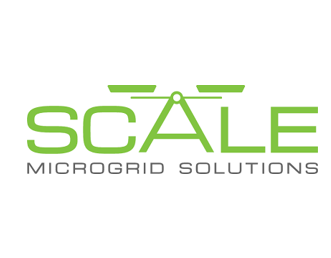
Scale Microgrid Solutions
Scale Microgrid Solutions delivers sustainable and reliable power to commercial and industrial customers by deploying unique, fully-financed microgrids and distributed energy solutions.
123Fab #52
1 topic, 2 key figures, 3 startups to draw inspiration from

In June 2021, to meet the increased demand for bioprocessing assemblies, Entegris announced that it would invest $30 million to expand three manufacturing facilities. If the idea of using living components in industrial processes is not new – humans were already using yeast to make bread and beer in 4,000 BC – today, bioprocessing is taking it to the next level.
Bioprocessing is any process that uses complete living cells or their components (e.g., bacteria, enzymes, chloroplasts) to obtain their desired products. It is key to several emerging industries and technologies, including the production of renewable biofuels such as ethanol and biodiesel, therapeutic stem cells, or new vaccines. Bioprocessing has several advantages. First, it is an extremely efficient process (a small amount of enzyme quickly yields a lot of product) that operates under mild conditions, thus saving energy. The products are biodegradable and pure and the process is safe (any contamination by an enzyme or known microbe is harmless) and waste-free.
The bioprocess consists of an upstream and a downstream stage. Upstream bioprocessing is the first step in which the microorganisms or cells are grown. They go through several stages of cultivation in a controlled environment within a bioreactor, to be multiplicated. Then, downstream bioprocessing is there to meet purity and quality requirements through cell isolation and purification. Five main types of technologies can be used:
- Conventional bioreactors: These are manufactured systems that support a biologically active environment.
- Single-use bioreactors: These are bioreactors equipped with a disposable bag or instead of a reusable culture vessel. This reduces the cross-contamination risk, requires fewer maintenance requirements and less stringent validation protocols for regulatory approvals.
- Cell culture media: These encompass gels or liquids compounds and nutrients created to support the growth of cells in artificial environments.
- Filtration & concentration: The two types of filtration used in bioprocessing are Direct Flow Filtration (DFF) that uses a single pass of the process fluid through the filter membrane, and Tangential Flow Filtration (TFF), where the process fluid flows parallel (tangential) to the membrane surface.
- Process chromatography: It consists of a pilot- or process-scale system used to separate and purify biomolecules.
The innovations associated with these technologies partly explain the increasing adoption of bioprocessing. First, productivity has increased during the upstream process thanks to new micro-bioreactors (like the Ambr of Sartorius) that allow rapid screening of a large number of media, feeds, and operating conditions such as temperature to determine those producing the highest titers. There are also innovations in the downstream process, with the use of new proteins for purification or improved architecture of the chromatographic resins for faster flow rates. Companies like Pall are continuously working on such innovative solutions. Finally, the switch from batch to continuous bioprocessing, to develop more efficient processes and to reduce time and costs, is enabled by new precisely controlled valves, sensors, and filtration technologies (inline ultrafiltration, diafiltration).
These innovations have an impact on several industries. The main application sectors are biopharmaceuticals, agriculture and food, energy, and waste treatment. Many startups are addressing this surging market in various fields. The American start-up Mango Materials has developed a patented, low-impact biological process that produces bioplastic from methane. Methane from landfill facilities is converted into biodegradable plastic by non-genetically modified bacteria. Their solution is competitive with conventional petrochemical-based plastics and has a capacity of over 10 million pounds of bioplastic per year. Bioprocess engineering in the agriculture and food industry offers opportunities to design and produce new or improved agricultural and food products and their manufacturing processes. In the energy sector, bioprocessing is more and more used for producing biofuels. Start-up TerViva, backed by agricultural-technology businesses, uses the Pongamia plant to produce oil from its seeds. Pongamia produces ten times more amount of oil per acre than soybean and requires only a fraction of resources (water, fertilizers, and pesticides). On top of biodiesel and renewable diesel, Pongamia seed oil can be converted into lubricants, animal feed supplements, or fertilizer. Algae is another way of bio-producing biofuels. The American startup Algenol produces ethanol by using algae, sunlight, CO2, and seawater. When it comes to large corporations, the use of bioprocessing is often limited to specific activities, notably biopharmaceuticals, and the scale. For instance, GE Healthcare (General Electric) reported revenues of $1.5 billion in 2015 from bioprocessing and acquired in 2017 the bioprocessing startup Puridify.
While bioprocessing is a mature field, challenges remain. First of all, the transition from batch to continuous operation is a source of complexity (investment in equipment, process updates, contamination risks, etc.). Furthermore, bioprocessing 4.0 still has progress to make, in terms of digitalization of processes and more systematic data collection and analysis.
To conclude, bioprocessing is becoming an increasingly used technique in various fields. While regulations and norms may be a hindrance in the pharmaceutical industry, in other sectors such as waste treatment, bioprocessing has a huge untapped potential. Single-use bioreactors are expected to be the most widely adopted in the coming years as they are more flexible and can be set up into operation very quickly.
2 Key Figures
180 bioprocessing startups
registered by Tracxn
Global bioprocessing market expected to reach $51.9 Bn by 2028
The global bioprocessing market is estimated at $19.4 Bn in 2021 and is expected to reach $51.9 Bn by 2028, at a CAGR of 16.0%.
3 startups to draw inspiration from
This week, we identified three startups that we can draw inspiration from: Ingenza, Microvi, and Cytoo.

Ingenza
Founded in 2002, Ingenza is an industrial biotechnology startup with a broad customer base across the chemicals, pharmaceuticals, food, feed and fuel industries. They apply synthetic biology to the manufacture of industrial products including enhanced biofuels, sustainable manufacturing of chemicals and the production of protein therapeutics. They also license their proprietary bioprocess technologies.

Microvi
Microvi is a biotechnology startup that discovers, develops, manufactures, and commercializes innovative biocatalytic solutions for the water, energy, and chemical industries. Its MicroNiche Engineering platform is a microenvironment of biological systems is precisely designed to enhance microbial life and optimize metabolic performance.
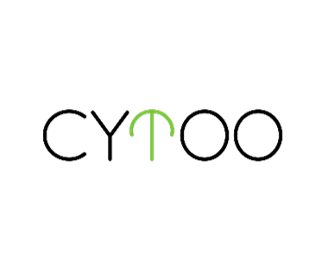
Cytoo
Cytoo is a French startup that develops, manufactures, and distributes products that make cellular analysis robust and reliable by dramatically decreasing cell variability. Their portfolio includes a proprietary cell adhesive micropattern technologies to target High Content Screening and Analysis companies within the large cell biology market.
123Fab #51
1 topic, 2 key figures, 3 startups to draw inspiration from

Behind the concept of the autonomous car lies 6 levels of automation ranging from 0 (classic car) to 5 (fully autonomous). Today, most commercially available vehicles are at most level 2: partial automation. At level 3, the vehicle can take full control of driving in certain situations (such as in traffic jams) — these vehicles are just coming to market.
Over the past decade, there has been much hope that automated cars would arrive in the near future, but now this prospect seems more remote, with the sale of Uber’s self-driving department 6 months ago not boding well for the industry in the short term. So what went wrong? What are the issues that the carmakers’ $120Bn investment over two years could not solve?
Part of the answer lies in the myriad of potential situations one may encounter while driving. Autonomous cars work well in controlled environments, but to achieve level 4 or 5 autonomy, i.e. letting go of the steering wheel for most of the journey, they need to be fully prepared for any situation (e.g. snow covering road markings, areas with no coverage, street lighting malfunctioning, jaywalking pedestrians, etc.). Thus, training artificial intelligence is essential for its public adoption, which is what OEMs, startups and Tier-1s are doing.
Training of algorithms for the multiplicity of situations
One step towards fully autonomous driving is to assess the safety of the AI driving model and highlight its blind spots to improve training on these cases. Startups such as Phantasma Labs have developed a virtual testing environment to assess the model’s behavior when confronted with Vulnerable Road Users (VRUs) such as pedestrians or cyclists. The model is faced with millions of situations involving machine learning-based VRUs in order to study the driving and address the mishandled situations. Other unexpected objects can disrupt driving. If traffic signs, stands, barriers, or excavators on the road seem straightforward to avoid for a human driver, it is more difficult for AI that has never encountered it before. Deep Safety offers annotated datasets dedicated to training models for the construction or road work industry. Its own trained AI identifies unknown objects encountered, raising an alert for the driver to take over. To evaluate the general safety of a model’s driving skills, Ivex proposes a safety assessment tool that provides KPIs on the safety of trajectories taken by the autonomous driving system, either in simulation or on real driving data, to spot potential improvements.
Drawing on as much data as possible
It seems unlikely that traditional cars will disappear in the near future and the behaviour of human drivers is harder to predict than that of driverless cars. Startups are also addressing the subject by connecting traditional and driverless cars. Valerann builds road sensors that gather information for autonomous vehicles about their in-lane location, even when the markings are not visible. They also connect classic cars to driverless vehicles by sharing their exact location and predicted trajectory, spotting abnormal driving behavior, and warning surrounding cars of danger. Eyenet offers collision prediction software based on GPS data from phones and AI that could be used to connect regular vehicles to autonomous ones and detect and prevent potential collisions. All this information is very valuable. The more accurate real-time data the model has, the easier it is to make the right decision.
React as quickly as possible
Training more complex models, fed by more information and capable of handling a wider range of situations, comes at a price. In the case of autonomous vehicles, every millisecond counts in the decision-making process, which puts great pressure on the data transmission process as well as on the computational power that can be installed in the car. Regarding data transmission, 5G and smart cities will have a great role to play, and the technology is on its way. When it comes to enhancing the car’s computational performance, edge computing seems to be the most promising answer. Unlike cloud computing, where calculations are performed on a remote server, far from the data, edge computing solutions offer calculations in microdata centers, relatively close to the car. This proximity tackles two problems: firstly, for autonomous cars, lag would have disastrous consequences and the lagging risk in communication is reduced when the data is sent to a closer location. Secondly, privacy is increased and the hacking risk is reduced as the data arrives in a smaller, more controlled environment than the cloud. Vapor.io provides microdata centers designed for edge computing that could be used for autonomous vehicles. Quadric.io is developing edge computing processors optimized for real-time calculation that will allow deeper models to be run. AlphaIcs has also developed its Real AI Processor (RAP), an edge computing solution designed for heavy AI applications like real-time automated driving. Together, these solutions address the trade-off between computing power and network latency for autonomous cars.
Startups appear to be leading the way in fully autonomous car innovation, thanks to massive funding from OEMs: Toyota and Aurora announced a partnership 4 months ago to produce mass autonomous vehicles for ride-hailing networks like Uber. Last year, Jaguar Land Rover partnered with Waymo to develop Waymo’s driverless fleet, and Volkswagen invested $1 billion in Argo’s self-driving technology and its Autonomous Intelligent Driving department became part of Argo.
It is difficult to assess when, or even if, autonomous vehicles will be the most represented on the road of the future, but applications are definitely emerging be it for ridesharing, trucking, or deliveries, market leaders are investing and technology is going forward.
2 Key Figures
129 self-driving car startups
registered by Tracxn
Global autonomous car market expected to reach $1,642 Bn by 2025
The global autonomous car market was estimated at $818.6 Bn in 2019 and is expected to reach $1,642 Bn by 2025, at a CAGR of 17.4%
3 startups to draw inspiration from
This week, we identified three startups that we can draw inspiration from: Phantasma Labs, Quadric.io and Eyenet.
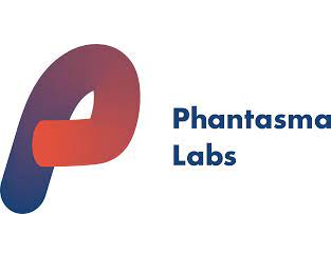
Phantasma Labs
Founded in 2018, Phantasma Labs is a Berlin based startup that developed artificial intelligence-based massive simulations designed to improve self-driving automobiles. The company’s platform generates a substantial amount of data-sets related to real-life situations at scale for self-driving cars, models the behavior of pedestrians, cyclists and other road users in large-scale simulations in virtual scenarios, enabling autonomous vehicle makers to learn from real-life situations without the consequences of accidents.

Quadric.io
Based in California, Quadic.io developed an edge processor designed to meet the needs of next-generation autonomous products, Industrial IoT products, and robots. The company’s processors can be incorporated into a wide range of products that require instantaneous processing of real-world data streams with minimal power and maximum speed as well as commute safely, industrial robots to complete critical tasks and create human interaction with machines, enabling developers to empower with tools to create tomorrow’s technology today.

Eyenet
Created in 2018, Eyenet developed a collision prediction and prevention software-based platform designed to addresses safety challenges in the shared mobility landscape. The company’s platform incorporates AI-powered algorithms that calculates user location and collision probability as well as utilizes a sophisticated probability analysis for spatial cross-correlation of bearing, velocity and acceleration to determine an imminent collision.
123Fab #50
1 topic, 2 key figures, 3 startups to draw inspiration from

Sustainability initiatives have grown exponentially in recent years, in public and private companies alike. This trend has been further reinforced by the pandemic, highlighting that sustainability is no longer a top-down discretionary topic, but a bottom-up business imperative. There is a real challenge to engage all stakeholders in this common goal, employees first. At the same time, stakeholders are increasingly voicing their expectations, be they clients, suppliers, regulators or employees, pushing for greater integration of green practices across businesses. The driving forces are therefore twofold.
In response, a fairly recent model has emerged in academic research: green human resources management (GHRM). Beyond the buzzword that may be used, GHRM refers to the policies, practices and systems that are used to incorporate green objectives throughout the HRM process, namely recruitment, training, development and compensation. Human resource departments are instrumental to the fulfillment of environmental objectives, if only by creating a sustainability culture within the company that encourages the emergence of individual initiatives.
Recruitment
While building a strong employment brand has always been essential to attract and retain high-quality talent, building a green employer reputation is even more so. And this is especially beneficial as employees serve as frontline agents for more sustainable business operations. In 2011, engineers at semiconductor chip-maker Intel devised a new chemical process that reduced chemical waste by 900,000 gallons, saving $45 million annually. Similarly, PG Tips employees reduced millimeters off a teabag, saving 9.3 tonnes of paper. As a result, a plethora of corporates (e.g. Google, Timberland, and General Electric) are reaping the benefits of positioning their organizations and recruitment processes in favor of green-minded candidates.
Onboarding, training and development
While recruiting mission-minded individuals is a great lever, instilling further awareness and values by the way of targeted training and development workshops can also contribute to the GHRM effort. Last September, BBVA announced the launch of sustainability training for its 125,000 employees worldwide. Tailored to the different departments, the training session covers climate change and the direct and indirect impacts arising from the environmental risks of BBVA’s activities. Among the various HR components, it is undeniably in the onboarding and training segment that most startups are emerging. Alongside consultancies and associations (e.g. La Fresque du Climat), startups are designing workshops to infuse best practices in their future employees. Energic, a French startup, is an example. They organize sustainability challenges for companies in order to raise awareness around sustainability issues. At Aster Fab, along with other players, we run a training course named INVEEST to help industrial and financial players master the financing levers for energy transition projects.
Performance management and compensation
Another way to bolster employee engagement is to include sustainability objectives into performance reports. Intel was among the pioneers in this field. Environmental metrics have been part of their compensation plan since 2008. Other companies have put in place similar programmes since, such as Danone, Alcoa, Xcel Energy, etc.
Engaging employees to help a business operate sustainably is becoming all the more essential as younger generations expand their presence in workforces and push sustainability to the head of corporate agendas. If startups are flourishing in the field of carbon measurement, reduction and offsetting (see our 123Fab #42), very few are tackling the GHRM market at the moment. A French startup, CitizenWave, is one of the few to do so. With its collaborative SaaS solution, it strives to engage employees in an eco-responsible approach based on collective intelligence. Other solutions help companies encourage their employees to act at their own level: sustainable mobility credit cards (Betterway), carpooling solutions (Kinto, Karos), donation platforms (Alaya), etc.
In short, the GHRM market for startups is very immature despite the vast employee engagement market. While training to educate and raise awareness around environmental best practices is becoming commonplace in most large corporates, as well as gamification and nudging, very few initiatives revolve around the other HR components. Yet the climate emergency is such that we can predict that companies will need to equip themselves with tools to engage and track the actions of their employees to meet their own targets. The handful of startups that are positioning themselves on the topic is a weak signal of this trend.
2 Key Figures
1,775 employee engagement startups
registered by Tracxn
Global HR management market expected to reach $34.7 Bn by 2027
The global HR management market was estimated at $16 Bn in 2020 and is expected to reach $34.7 Bn by 2027, at a CAGR of 11.7%.
3 startups to draw inspiration from
This week, we identified three startups that we can draw inspiration from: Energic, CitizenWave and Alaya.
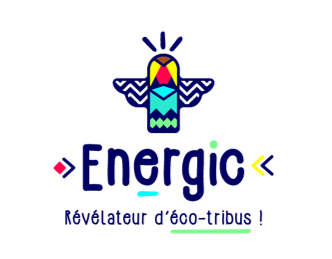
Energic
Energic is a French startup that organizes sustainability challenges for companies, schools and local communities to raise awareness.

CitizenWave
CitizenWave is a French startup that has developed a SaaS solution to engage employees to take green action. Using its mobile application and analytics platform, it is helping companies transform themselves quicker building upon collective intelligence.

Alaya
Alaya is a Swiss startup that has developed an ’employee purpose platform’ to empower companies to build a purpose-driven culture and engage employees to make an impact, one act at a time (volunteering, giving, biking to work, saving energy, etc.)
123Fab #49
1 topic, 2 key figures, 3 startups to draw inspiration from

In May 2021, Barbara Pompili, the French Minister of the Ecological Transition, announced the selection of 215 startups and SMEs for the GreenTech Innovation label, among which 45 are solutions for more sustainable buildings and better energy efficiency. These startups will be supported by the government for their development and commercialization. This is one example out of many government initiatives to boost the building energy efficiency and renovation market.
The International Energy Agency estimates that the building sector is responsible for 42% of global electricity consumption. Energy efficiency is about performing the same tasks with less energy. Buildings can go down to net-zero energy consumption which means that the total amount of energy used equals the amount of renewable energy created on-site or by off-site renewable sources. As most of the energy used in buildings is for maintaining a comfortable temperature (heating or cooling) and good ventilation, effective thermal insulation has a major impact on energy consumption. Thus, in the context of global efforts to reduce energy consumption and reach the 2050 net-zero target, buildings’ energy efficiency is more than necessary. To achieve it, most of the efforts need to focus on renovating and retrofitting existing buildings, rather than new performant ones, as they will represent more than 90% of 2050’s properties. It has ecological and economic benefits as it reduces the amount of energy consumed (and associated GHG emissions) while lowering the energy bill for the occupants. The top priority are the « thermal strainers » which are the buildings with the worst energy efficiency, where cold enters in the winter and heat enters in the summer. In France, they correspond to the buildings with an energy consumption above 330 kWh /sqm /year, which are ranked F or G. There are three main thermal losses. The surfaces (roof, walls, windows, ground floor) between the interior and exterior account for up to 80% of energy loss. Then, the controlled mechanical ventilation and ventilation grilles, which ensure the renewal of indoor air, make up to 20% to 25% of energy loss. Finally, the thermal bridges, which are points in construction where the insulation barrier is interrupted, contribute to 5% to 10% of heat loss. Thus, efforts should be put on external cladding and filling the thermal bridges to retrofit the existing buildings.
Different types of innovative solutions exist to improve buildings’ energy efficiency:
- Measure: Many sensors and IoT technologies have been developed to compute more accurately buildings’ energy consumption. French start-up Smart Impulse, for instance, has developed a smart meter to measure the electricity consumption of buildings by usage (lighting, IT, heating, etc.) which gives insights on potential energy savings.
- Retrofit: Picking the right materials highly contributes to buildings’ efficiency. New technologies have been developed to avoid energy loss, such as the thermal reflective resin for roofs of the start-up Cool Roof. Their solution aims to return roughly 90% of the solar heat. It protects the roof from physical damage while maintaining a comfortable temperature inside the building. Moreover, the Dutch EnergieSprong approach is being deployed in France, UK, and Germany for a quick and affordable retrofit of the existing buildings into zero-energy ones.
- Optimize: There are more and more integrated energy management systems that measure and autonomously regulate energy consumption. Thanks to numerous sensors and IoT devices, the American start-up Budderfly provides a solution optimizing entire buildings’ energy consumption.
Although these solutions are very promising, some challenges still have to be overcome. First, renovation takes time obtaining the required permits for structural renovations, finding the right partners, and performing it. Then, even if some startups and companies are offering affordable solutions, it remains costly and often requires important initial investments. All the more so as energy-efficiency goals are often secondary to economic considerations and are not taken into account in the property’s life-cycle costs. Another barrier is the fragmentation of the construction industry, which involves many different actors and stakeholders who have varied interests. Finally, the diversity of the social and regulatory contexts – within the EU for instance – makes it hard to scale solutions.
However, most countries are addressing this issue and implementing associated regulations, incentives, and climate change targets. In France, the government has put in place financial support for buildings renovation but also biding policies like the interdiction from 2028 to rent a flat or house with an energy performance rated F or G. In 2021, the French government announced 6.6 million euros for buildings’ energy renovation over 2 years in their economic recovery plan. Another example of an efficient policy in California where homes and buildings are relatively energy-efficient today. Since 1975, the California Public Utility Commission has directed the investor-owned utilities to commit over $US 5 billion to energy efficiency programs, 85% of which has been targeted at retrofit energy efficiency investments in existing buildings. For instance, Netflix has equipped its headquarters in Los Gatos with View dynamic glass, which controls how much light gets in and contributes to saving up to 20% of energy costs.
To conclude, there are a lot of startups that have spotted an opportunity in improving buildings’ energy efficiency, whether it is with hardware and high-tech materials or smart software. The market is far from being addressed, and governments are multiplying incentives to do so, which is very promising as soon as people are willing to make the investment.
2 Key Figures
637 building energy efficiency & management startups
registered by Tracxn
Global efficient building market expected to reach $253 Bn by 2027
The global efficient building market was estimated at $146 Bn in 2020 and is expected to reach $253 Bn by 2027, at a CAGR of 8.15%.
3 startups to draw inspiration from
This week, we identified three startups that we can draw inspiration from: Sensor Flow, View, and 75 Fahrenheit.

SensorFlox
SensorFlow is a Singapore-based start-up that develops room automation and energy management systems focussed on the hospitality sector. Its solution helps automate a building to optimize energy consumption. It includes occupancy sensors, smart thermostats, door sensors, and split unit thermostats.

View
View is a Californian start-up that has created a glass solution that increases and optimizes the amount of natural light in buildings while simultaneously improving energy efficiency, and advancing smart and connected buildings.

75 Fahrenheit
75F is a US-based start-up making smart building automation affordable and easy to deploy. 75F leverages IoT, Cloud Computing and Machine Learning for data-driven building intelligence and controls for HVAC, lighting and energy optimization.
123Fab #48
1 topic, 2 key figures, 3 startups to draw inspiration from
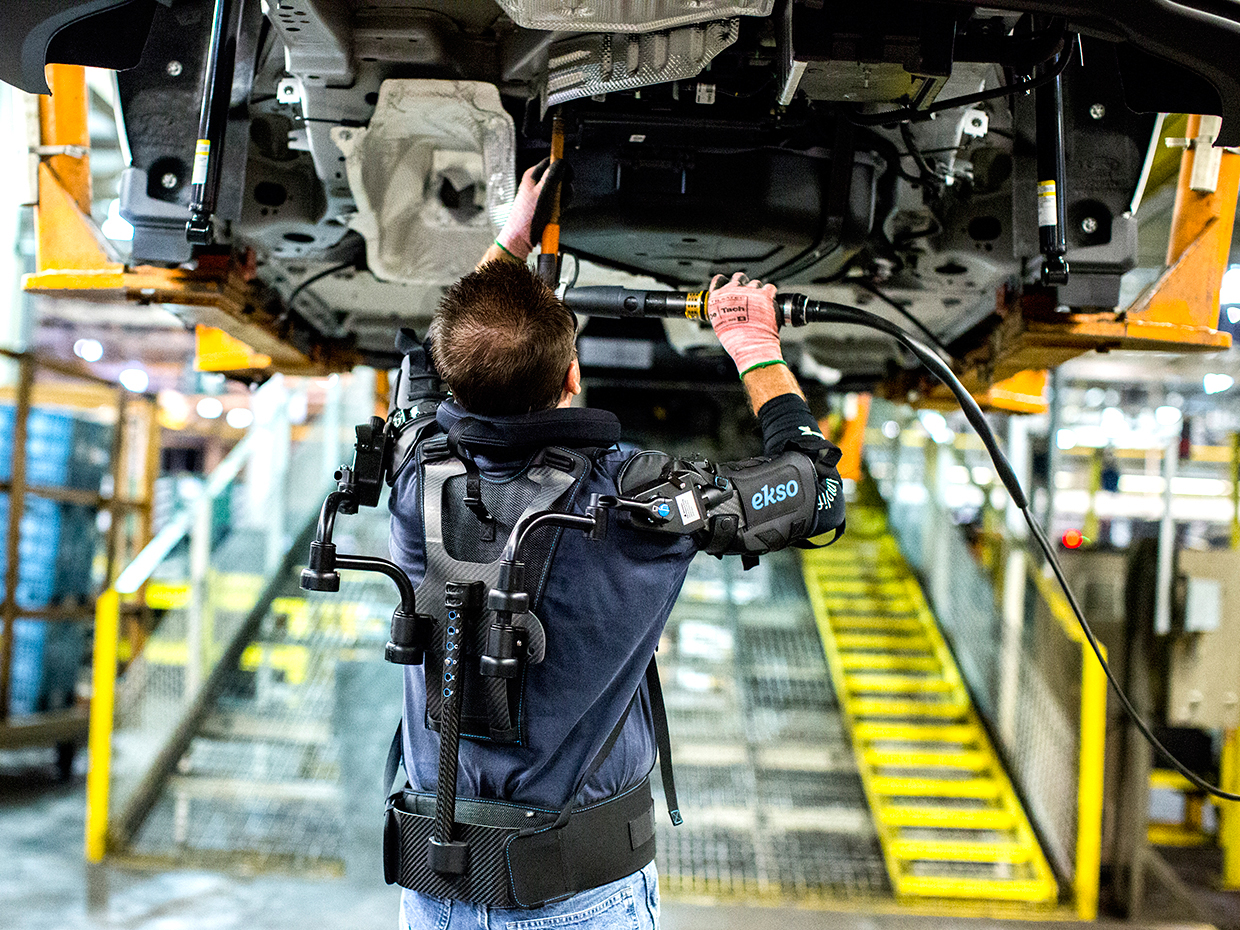
While many of the early exoskeletons were focused on military and medical applications, in recent years there has been an increase of new use cases due to decreasing costs. Exoskeletons are being used in a range of industries from manufacturing and construction to agriculture. BMW, Honda and Hyundai use them in the automotive industry; Samsung, Panasonic, Mitsubishi and Siemens in electronics; and Geodis, Pon and AT in logistics and shipping.
According to ASTM International, exoskeletons can be defined as wearable devices that work in tandem with the user. They are different from autonomous robots in that they don’t work in place of the blue-collar worker. They are placed on their body and act as amplifiers that augment, reinforce or restore human performance, as opposed to mechanical prosthetics, such as a robotic arm or leg, that replace original body parts.
The global exoskeleton market can be segmented on the basis of two main criteria. On the basis of extremity, the market can be divided into lower extremity, upper extremity and full-body. In terms of product, the market can be classified into two categories:
- Powered exoskeletons — they use batteries or electric cable connections to run sensors and actuators
- Passive exoskeletons — they do not have any electrical power source and can be used for weight distribution, energy capture, locking, etc.
In recent years, exoskeletons have emerged in industries that are less amenable to automation. For example, industries such as construction or oil and gas, which operate in unstructured environments, or manufacturing industries that produce a wide variety of parts of different shapes and sizes. In these industries, blue-collar workers handle the most complicated tasks, resulting in wear-and-tear experiences. While some repetitive tasks have been handed over to autonomous robots, exoskeletons fill the automation gap for non-repetitive and hazardous tasks by allowing workers to perform strenuous tasks safely and efficiently. The EksoZeoG developed by Ekso Bionics, for example, helps construction workers use heavy hand tools by bearing the weight of the heavy equipment.
Advances in enabling technologies (actuators, batteries, advanced materials, etc.) have reduced the costs and increased the functionality of exoskeletons in recent years, but they still represent a significant investment. While the price varies between passive and active exoskeletons, full-body, lower and upper, the average exoskeleton costs several thousand dollars. Given the significant cost, a handful of startups have sought to lower the barrier to adoption via more innovative business models. The concept of Robotics-as-a-Service (RaaS) is gaining ground. Sarcos, which is one of its proponents, allow customers to shift their CAPEX to OPEX, and thus deploy solutions without upfront costs. Based on its research, Sarcos’ customers perceive other benefits to RaaS, such as the elimination of technology risk and the absence of maintenance costs. Other startups are looking to democratize the use of exoskeletons, especially passive ones that are less expensive. With the help of crowdfunding, French startup HMT wants to use a low-cost model to sell its products at €200.
While the market is still looking for an accurate combination of hardware, the competition to make the best, powered exoskeleton is slowly shifting from a race for the best hardware to a race for the best software. In this sense, the industry can be compared to the semiconductor industry in the late 2000s with wafer handlers. The robots all managed to move a wafer from A to B, regardless of the hardware, but it turned out that it was the software that made the difference. The winners were the ones with the best software and the most reliable architecture with less downtime. Today, exoskeleton research is moving in this direction and increasingly focusing on complex software. It seeks to develop more intelligent exoskeletons, via features such as balance control or energy transfer optimization. The BioMot project, based at the Human Locomotion Laboratory in Madrid, is a weak signal of this shift. They are trying to develop more wearable equipment, that is lightweight and compact, and which is especially better able to anticipate and detect the intended movements of the worker. Through dynamic sensorimotor interactions, the exoskeletons have real-time adaptability and flexibility, increasing the symbiosis between the wearable and the user. Such projects pave the way to a new generation of lighter and smarter exoskeletons.
In short, the future of industrial exoskeletons looks bright. Barriers to adoption are expected to further decrease as costs drop and lightweight exoskeletons are increasingly developed. Regulation should also emerge, as evidenced by ASTM International’s creation of an exoskeleton and exosuit committee in 2017 to define international standards. Just as it is illegal to walk in construction areas without the proper PPE, it may one day be illegal for blue-collar workers on construction sites, in warehouses and manufacturing plants to use tools without the adequate exoskeleton. What’s more, advances in materials, battery and actuator technologies suggest that new applications are in the offing, which should boost adoption even further.
2 Key Figures
129 exoskeleton startups
registered by Tracxn
Global exoskeleton market expected to reach $5.7Bn by 2027
The global exoskeleton market was estimated at $310M in 2019 and is expected to reach $5.7B by 2027, at a CAGR of 43.4%
3 startups to draw inspiration from
This week, we identified three startups that we can draw inspiration from: Laevo, Noonee and StrongArm Technologies.

Laevo
Laevo is a Netherlands based startup that is developing a light and comfortable exoskeleton for work and industry. It redistributes forces away from the user’s back muscles while bending forward.

Noonnee
German startup Noonee manufactures a lower-body exoskeleton that is designed to function as a chair. Their product is called Chairless Chair and is specifically made for workers in the automotive industry. Its main purpose is to prevent worker disruptions due to injuries or muscle fatigue and also to help an aging workforce.
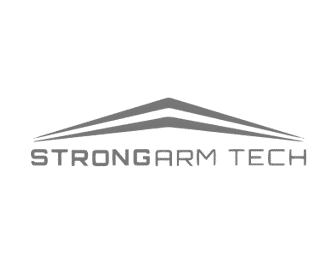
StrongArm Technologies
StrongArm Technologies is a developer of a safety platform designed to actively manage industrial safety, productivity and performance. The company’s platform uses wearable sensors and AI-based analytics to collect, analyze and predict insights on industrial workers to mitigate the injury risk, increase worker productivity and comfort.

